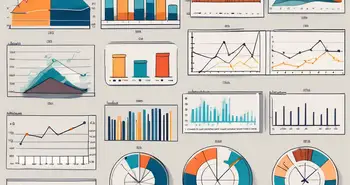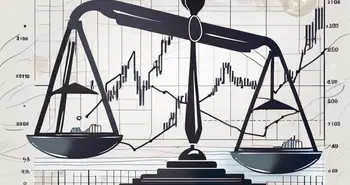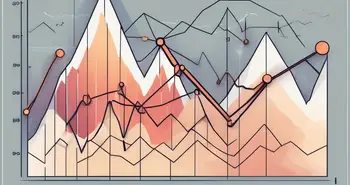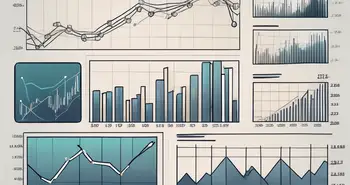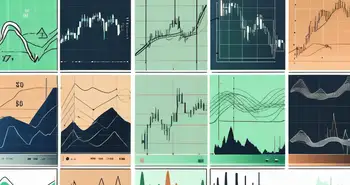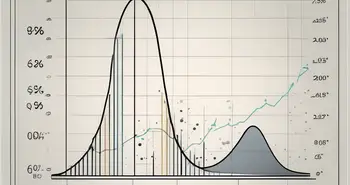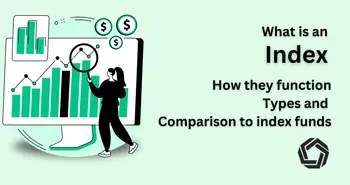The Top Forex Indicators for Optimal Trading Performance

As an expert in the field of forex trading, I understand the importance of using the right tools and strategies to achieve optimal trading performance. In this article, I will dive into the world of forex indicators and how they can significantly enhance your trading decisions. Whether you're a novice trader or an experienced professional, understanding the role of forex indicators and knowing which ones to rely on can make all the difference in your trading success.
Understanding Forex Indicators
Forex indicators are mathematical calculations or visual representations that traders use to analyze market trends, identify patterns, and make informed trading decisions. These indicators are designed to provide valuable insights and help traders predict future price movements in the foreign exchange market. However, it's important to note that forex indicators are not foolproof and should be used in conjunction with other forms of analysis to increase their effectiveness.
The Role of Forex Indicators in Trading
Forex indicators serve as useful tools for traders by providing them with valuable information about market trends and potential trading opportunities. By studying these indicators, traders can gain insights into market sentiment, identify overbought or oversold conditions, and spot potential trend reversals. Ultimately, forex indicators assist traders in making more informed trading decisions and managing risk effectively.
For example, moving averages are a popular type of forex indicator that helps traders identify trends by smoothing out price fluctuations over a specified period. Traders can use moving averages to determine the direction of the market and identify potential entry or exit points for their trades.
Another commonly used forex indicator is the relative strength index (RSI), which measures the speed and change of price movements. Traders often use the RSI to identify overbought or oversold conditions, indicating potential reversals in the market. By combining the RSI with other indicators, traders can confirm trading signals and increase the probability of successful trades.
Fibonacci retracement levels are also widely used in forex trading. These levels are based on the Fibonacci sequence, a mathematical concept that occurs naturally in many aspects of life, including financial markets. Traders use Fibonacci retracement levels to identify potential support and resistance levels, which can help them determine where price reversals may occur.
The Different Types of Forex Indicators
Forex indicators come in various forms, each with its unique purpose and function. Some of the most widely used forex indicators include moving averages, relative strength index (RSI), Fibonacci retracement levels, and many more. Each indicator has its strengths and limitations, and it's crucial to understand how they work before incorporating them into your trading strategy.
Other types of forex indicators include oscillators, such as the stochastic oscillator and the MACD (Moving Average Convergence Divergence), which help traders identify overbought or oversold conditions and potential trend reversals. These indicators are particularly useful in range-bound markets where prices tend to fluctuate between support and resistance levels.
Volume indicators, such as the on-balance volume (OBV) and the volume-weighted average price (VWAP), provide insights into market activity and can help traders gauge the strength of a trend. By analyzing volume alongside price movements, traders can confirm the validity of a trend and make more accurate trading decisions.
It's important to note that while forex indicators can provide valuable information, they should not be used in isolation. Traders should consider other factors, such as fundamental analysis, market news, and risk management strategies, to make well-rounded trading decisions. Additionally, traders should regularly review and update their indicator settings to adapt to changing market conditions and avoid relying on outdated information.
The Importance of Forex Indicators for Trading Performance
Effective use of forex indicators can greatly enhance your trading performance and overall profitability. Let's explore two key aspects of utilizing forex indicators for optimal trading results.
Enhancing Trading Decisions with Forex Indicators
By incorporating forex indicators into your trading strategy, you can gain a deeper understanding of market dynamics and make more informed trading decisions. This is crucial because the forex market is influenced by a multitude of factors, including economic data, geopolitical events, and investor sentiment.
For example, the moving average indicator can help you identify trend directions by calculating the average price over a specific period. This indicator smooths out price fluctuations and provides a clearer picture of the market's overall direction. By understanding the current trend, you can align your trades with the market's momentum, increasing the probability of success.
Another useful indicator is the RSI (Relative Strength Index), which measures the speed and change of price movements. It can indicate potential overbought or oversold conditions, suggesting when a market may be due for a reversal. By recognizing these extremes, you can avoid entering trades at unfavorable levels and wait for more favorable opportunities.
Understanding these indicators and their implications can significantly improve the timing and accuracy of your trades. It allows you to make decisions based on objective data rather than relying solely on intuition or guesswork.
Predicting Market Trends Using Forex Indicators
Forex indicators can also assist in predicting market trends, allowing traders to ride the wave of profitable opportunities. By analyzing indicators such as the MACD (Moving Average Convergence Divergence) or the Bollinger Bands, traders can anticipate trend reversals or confirm existing trends.
The MACD is a versatile indicator that combines moving averages to identify potential buy or sell signals. It consists of two lines: the MACD line and the signal line. When the MACD line crosses above the signal line, it generates a bullish signal, indicating a potential uptrend. Conversely, when the MACD line crosses below the signal line, it generates a bearish signal, suggesting a potential downtrend. By paying attention to these signals, traders can enter trades at the early stages of a trend, maximizing their profit potential.
Bollinger Bands, on the other hand, are a volatility indicator that consists of a middle band, an upper band, and a lower band. The middle band is typically a simple moving average, while the upper and lower bands are calculated based on standard deviations. When the price approaches the upper band, it suggests that the market is overbought, and a reversal may occur. Conversely, when the price approaches the lower band, it indicates that the market is oversold, and a potential reversal to the upside may be imminent. By using Bollinger Bands in conjunction with other indicators, traders can confirm trends and make more accurate predictions.
This valuable information empowers traders to enter trades with confidence and capitalize on favorable market conditions. By combining technical analysis with fundamental analysis, traders can develop a well-rounded approach to trading, increasing their chances of success in the forex market.
Top Forex Indicators for Optimal Performance
Now that we've explored the importance of forex indicators, let's take a closer look at three top indicators that can significantly enhance your trading performance.
When it comes to forex trading, having the right set of indicators can make all the difference. These indicators provide valuable insights into market trends, price movements, and potential reversals. By incorporating these indicators into your trading strategy, you can make more informed decisions and increase your chances of success.
Moving Averages: A Key Forex Indicator
Moving averages are widely used by traders to identify trend directions and filter out market noise. By calculating the average closing price over a specified period, moving averages provide a smoothed line of the price action. This helps traders identify the prevailing trend and make informed decisions based on its direction.
There are different types of moving averages, such as simple moving averages (SMA) and exponential moving averages (EMA). Traders often use a combination of these moving averages to get a clearer picture of the market. For example, a crossover of the 50-day SMA and the 200-day SMA is considered a bullish signal, indicating a potential upward trend.
Additionally, moving averages can act as dynamic support and resistance levels. When the price approaches a moving average, it may bounce off or break through, providing traders with valuable information about potential entry or exit points.
Relative Strength Index (RSI): A Crucial Indicator for Forex Traders
The relative strength index (RSI) is an essential indicator that measures the speed and change of price movements. With values ranging from 0 to 100, the RSI helps traders identify overbought or oversold conditions. When the RSI reaches extreme levels, it can signal potential trend reversals, enabling traders to enter or exit trades at optimal points.
Traders often use the RSI in conjunction with other indicators to confirm signals. For example, if the RSI indicates an overbought condition while a bearish divergence is forming, it could suggest a potential reversal in the market. On the other hand, if the RSI shows oversold conditions and a bullish divergence is present, it may indicate a possible upward trend.
It's important to note that the RSI is not a standalone indicator and should be used in conjunction with other technical analysis tools to make well-rounded trading decisions.
Fibonacci Retracement: A Powerful Forex Indicator
Fibonacci retracement is a popular indicator used by traders to identify potential support and resistance levels. Based on the Fibonacci sequence, this indicator uses key ratios to predict potential price reversal zones. By drawing Fibonacci retracement levels on your trading charts, you can anticipate areas where price may reverse and plan your trades accordingly.
The most commonly used Fibonacci retracement levels are 38.2%, 50%, and 61.8%. These levels are derived from the Fibonacci sequence, a mathematical pattern where each number is the sum of the two preceding numbers (e.g., 0, 1, 1, 2, 3, 5, 8, 13, 21, and so on).
Traders often look for confluence between Fibonacci retracement levels and other technical indicators, such as trendlines or moving averages, to increase the probability of a successful trade. When multiple indicators align at a specific price level, it strengthens the significance of that level and can serve as a strong support or resistance zone.
It's worth noting that Fibonacci retracement levels are not foolproof and should be used in conjunction with other analysis techniques. However, many traders find them to be a valuable tool in their arsenal, as they provide a structured approach to identifying potential reversal zones.
How to Use Forex Indicators Effectively
Using forex indicators effectively requires a combination of proper analysis, practice, and discipline. Here are some key tips to help you maximize the effectiveness of forex indicators:
Combining Different Forex Indicators for Better Results
Instead of relying solely on one forex indicator, consider combining multiple indicators to strengthen your analysis. By using a combination of indicators, you can cross-validate signals and minimize false signals. For example, utilizing both moving averages and the RSI can provide a more comprehensive understanding of market trends and potential entry or exit points.
Avoiding Common Mistakes When Using Forex Indicators
While forex indicators can be powerful tools, it's crucial to avoid common mistakes that could lead to poor trading decisions. One common mistake is relying too heavily on a single indicator and ignoring other forms of analysis. It's important to consider other factors such as market news, economic data, and geopolitical events that can influence market sentiment. Additionally, always remember that no indicator is foolproof, and risk management should always be a priority.
The Future of Forex Indicators
The world of forex trading is constantly evolving, and technological advancements are playing a significant role in shaping the future of forex indicators. With the rise of algorithmic trading, more sophisticated indicators and automated systems are emerging. These advancements aim to provide traders with faster, more accurate trade signals based on complex algorithms and artificial intelligence. As the industry continues to evolve, traders can expect to see more innovative forex indicators that offer greater precision and efficiency in trading.
Technological Advances and Forex Indicators
Technological advances, such as big data analytics and machine learning, are revolutionizing the field of forex indicators. These advancements allow traders to analyze vast amounts of data and identify complex patterns that were previously challenging to detect. With the aid of powerful computers and advanced algorithms, traders can now access real-time data and make more accurate predictions based on sophisticated indicators.
The Impact of Algorithmic Trading on Forex Indicators
Algorithmic trading, also known as automated trading, relies heavily on forex indicators and complex algorithms to execute trades automatically. As more traders embrace algorithmic trading, the demand for advanced forex indicators that generate reliable trade signals will continue to grow. Traders can expect to see a convergence of traditional technical analysis with artificial intelligence and machine learning, ultimately leading to more refined and efficient forex indicators.
In conclusion, forex indicators are valuable tools that can significantly enhance your trading performance. Understanding the role of forex indicators, utilizing the right ones for your trading strategy, and avoiding common mistakes will help you make more informed trading decisions. As the industry evolves, staying informed about technological advancements and upcoming forex indicators will ensure that you stay ahead of the game. Remember, successful trading is not solely reliant on forex indicators. It requires a combination of analysis, discipline, risk management, and continuous learning to achieve optimal trading performance.
FAQ
What are forex indicators?
Forex indicators are mathematical calculations or visual representations that traders use to analyze market trends, identify patterns, and make informed trading decisions. These indicators provide valuable insights and help traders predict future price movements in the foreign exchange market.
How do forex indicators enhance trading performance?
Forex indicators enhance trading performance by providing valuable information about market trends, potential trading opportunities, and predicting market trends. By using indicators effectively, traders can make more informed trading decisions and manage risk efficiently.
Which are the top forex indicators for optimal trading performance?
Some of the top forex indicators for optimal trading performance include moving averages, relative strength index (RSI), and Fibonacci retracement levels. Each indicator has its unique function and can significantly enhance trading decisions when used effectively.
What are some common mistakes to avoid when using forex indicators?
When using forex indicators, it's essential to avoid relying too heavily on a single indicator, ignoring other forms of analysis, and neglecting risk management. Furthermore, understanding the limitations of each indicator and considering other factors such as market news and economic data are crucial for successful trading.
What does the future hold for forex indicators?
The future of forex indicators will be shaped by technological advancements, such as big data analytics, machine learning, and algorithmic trading. Traders can expect to see more sophisticated indicators that offer greater precision and efficiency in trading, driven by advanced algorithms and artificial intelligence.
Ready to elevate your trading with the indicators discussed? Discover Morpher, the revolutionary trading platform that integrates the power of blockchain for a seamless, fee-free trading experience. With Morpher, you can trade forex alongside stocks, cryptocurrencies, and even niche markets with zero fees, infinite liquidity, and the option for up to 10x leverage. Embrace the future of trading with fractional investing, short selling capabilities, and the security of a non-custodial wallet. Sign Up and Get Your Free Sign Up Bonus today to transform your trading journey with Morpher's innovative platform.

Disclaimer: All investments involve risk, and the past performance of a security, industry, sector, market, financial product, trading strategy, or individual’s trading does not guarantee future results or returns. Investors are fully responsible for any investment decisions they make. Such decisions should be based solely on an evaluation of their financial circumstances, investment objectives, risk tolerance, and liquidity needs. This post does not constitute investment advice.

Painless trading for everyone
Hundreds of markets all in one place - Apple, Bitcoin, Gold, Watches, NFTs, Sneakers and so much more.

Painless trading for everyone
Hundreds of markets all in one place - Apple, Bitcoin, Gold, Watches, NFTs, Sneakers and so much more.

